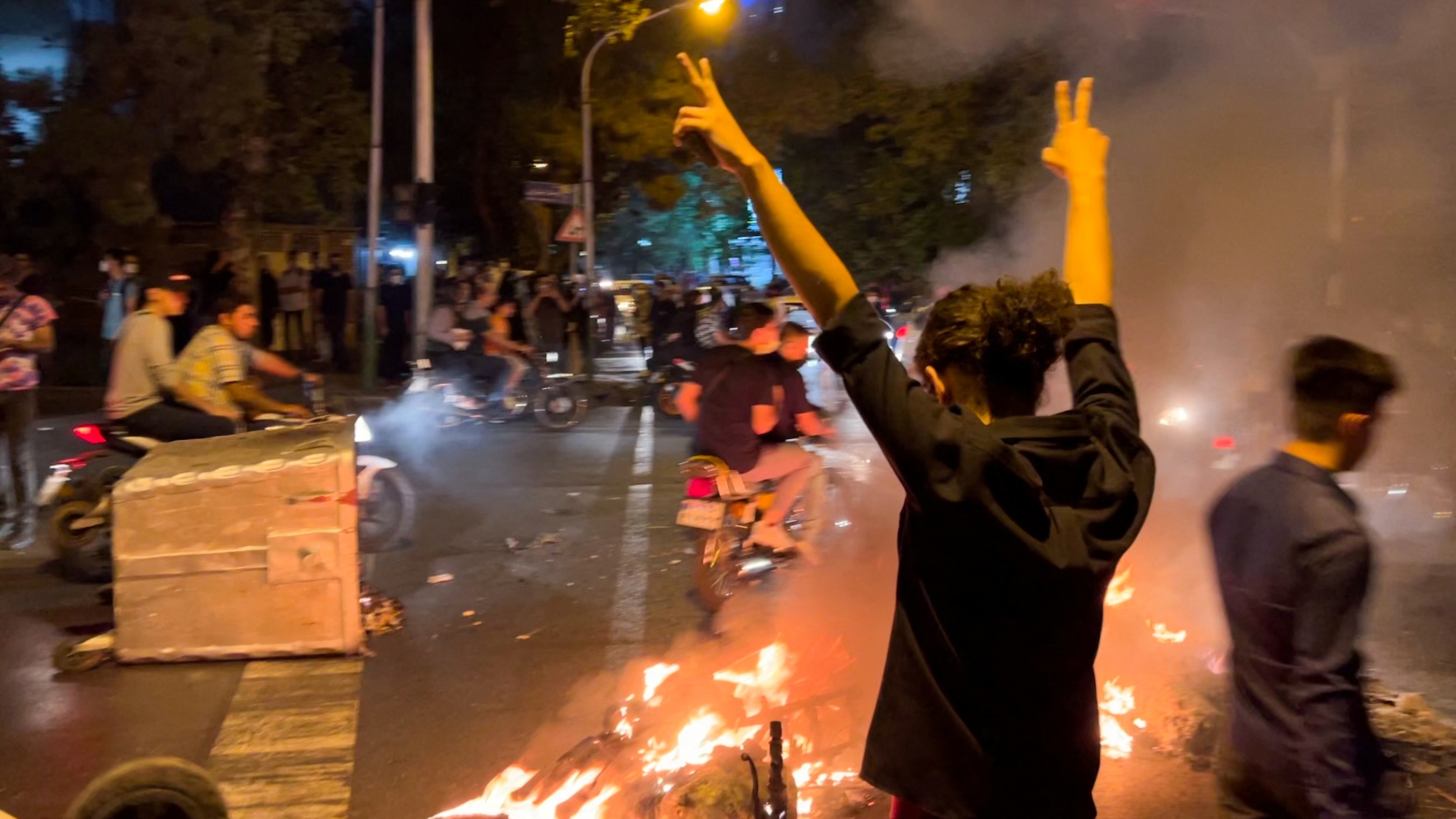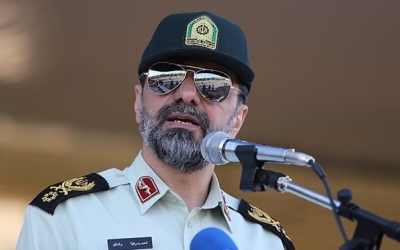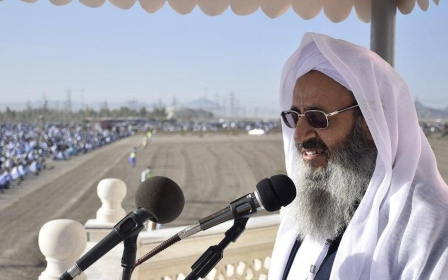Iran's protests four months on: Hope, rage and despair

Valiasr Square in the centre of the Iranian capital, Tehran, looked like a battleground the day Soorena* was arrested on a main street leading into it.
"There was a black armoured water cannon truck in the middle of the street hosing down protesters, who, in response, hurled whatever they could at the truck's windows and wheels," said the 17-year-old high school student, as he recalled that day towards the end of September.
Some time earlier, Soorena had left his father's shop, a block away from the square, to see what was going on and where the heavy smell of tear gas was coming from.
But that afternoon, Soorena did not make it back to the small shop, where, after school, he'd help his father sell backpacks. Nor did he return home for the next seven days.
Soorena's arrest took place during the first days of nationwide demonstrations that followed Mahsa Amini's death in police custody. Amini, a 22-year-old Kurdish-Iranian woman, died on 16 September after she was transferred, while unconscious, from a morality police centre in Tehran to the Kasra Hospital.
"The feeling in the air hypnotised me," said Soorena, remembering the day of his arrest. "I could not just stand there doing nothing. Suddenly I found myself amongst the people who attacked the truck."
An hour later, on his way back to his father's shop, five Basij paramilitary members threw him on the sidewalk, blindfolded him and put him in the back of a police van.
However, Soorena was lucky that after one night in detention, he was transferred to a youth detention centre and tried in a special court for those under 18. A week later, he was released with a six-month prison term suspended for two years, owing to him being a minor.
Four months later, when Soorena recalled the events that led to his arrest, Valiasr Square and the streets around it looked very different. Tehran's maddening traffic slowly flowed, and motorbikes rapidly drove between cars and pedestrians. No longer was there a sign of protest on those streets.
"Yes, the streets are quiet, but you can still feel the tension everywhere," Soorena told Middle East Eye.
"During the week I was detained, I saw many other detainees my age, and I don't think the government can repress all of us for a long time. Specifically university students, one or two years older than me, were well-organised and informed about politics."
University students at the forefront
As Valiasr Square experienced a quiet day in January, about one kilometre south, two police Mercedes cars were parked in front of the City Theatre complex.
The luxury cars were imported from Germany when the current parliament speaker, Mohammad Bagher Ghalibaf, was the country's police chief in the early 2000s, just after the 1999 deadly repression of a student uprising.
'Security forces are more careful about how they deal with and attack students. We use this small privilege and keep the fight going'
- Ronak, university student
Six police officers in olive green combat uniforms stood next to the two Mercedes, guarding the street carelessly. Everything seemed quiet. But the more westward one moves, towards the University of Tehran's main entrance, the more dense the presence of police cars, plainclothes officers and Basij paramilitaries on motorbikes is.
Despite a bloody crackdown on protests that has left at least 481 people dead, many university campuses in Tehran and other major cities are still witnessing unrest and demonstrations inside the campuses.
"Security forces are more careful about how they deal with and attack students," said Ronak, a student enrolled in a master's programme at the University of Tehran. "We use this small privilege and keep the fight going as police and the Revolutionary Guard have suppressed the demonstrations on streets by killing people."
However, security forces do not shoot live ammunition against students on campuses. Instead, university authorities handle the matter by suspending and expelling students.
The suspended students are banned from entering the campuses, and the only place they can show their opposition to the government is on the streets, where live rounds are deployed.
Despite the pressures on academics and student activists, Ronak was hopeful that the small-scale demonstrations in different parts of Tehran, shouting slogans from the rooftops at night, the protests inside campuses, and social disobedience against the obligatory hijab would keep the movement alive.
"I believe that very soon another big wave of demonstrations will begin, even if they continue to execute innocent people," she told MEE two days after the government, before sunrise, hung two young men arrested during protests in Karaj in November.
"The death sentences are only adding to my frustration. When I read about the executions, I feel a lump in my throat, but I am not going to swallow it. I, and young people like me will scream as loud as possible to remove this lump."
Two phases of attack on media
Carrying out four death penalties related to the protests, attacking the smallest anti-government gatherings in cities, according to local reports, arresting over 15,000 people, handing long prison sentences to demonstrators, and suspending student activists have not been the only methods the Iranian government has used to contain the 2022 anti-establishment movement.
Journalists have also been severely targeted by the judiciary and security forces. Over 75 journalists were arrested and at least 30 are still in custody since mid-September.
On 10 January, an Islamic Revolutionary Court branch announced one of the most extended prison terms ever handed to an Iranian journalist. The court in the northern city of Sari sentenced sports journalist Ehsan Pirbornash to 18 years in prison.
"Nothing new; we knew journalists would pay a high price for being the voice of ordinary people," said a veteran journalist who has witnessed several major attacks on media during the past two decades.
The journalist explained that the government's operation against the media occurred in two phases. First, security forces arrested journalists who reported Amini's death and interviewed the family members of those killed during demonstrations, as well as the journalists who were actively posting on social media.
"Since late December, we entered a new phase, and the [government] began arresting those who interviewed the family members of detainees who received a death sentence. Additionally, the journalists who published comments from the lawyers defending the detainees were also arrested," she said.
"I don't know, but we might also see a third phase."
Is there light at the end of the tunnel?
Unlike the younger generation, this veteran journalist and those who have witnessed or participated in the 1999 student movement, the 2009 Green Movement, and the 2019 unrest do not believe that the small-scale gatherings and rooftop chanting will breathe new life into the 2022 movement.
"When social movements under dictatorial systems encounter unbearable pressures, they usually enter an abeyance phase, and this is what we are now experiencing in Iran," a political scientist living in Tehran told MEE on condition of anonymity due to the danger of retaliation by the government.
'When social movements encounter unbearable pressures, they usually enter an abeyance phase, and this is what we are now experiencing in Iran'
- Political analyst, Tehran
The academic, who was once expelled from a university during Iran's Cultural Revolution (1980-83), said that the government has implemented an old strategy, in parallel to the protests, to increase the impact of repression.
"Analysing previous social movements shows that the government first attacked the leaders and prominent figures who acted as the voices of those movements. Subsequently, the movements, already under harsh repressive measures, could not organise and mobilise. And the same has been happening again," he said.
"This is one of the main reasons why only in Zahedan can people organise large-scale demonstrations. I think soon Molavi Abdol Hamid will also be targeted in one way or another."
Molavi Abdol Hamid is the most well-known and respected Sunni religious leader living in Zahedan, the provincial capital city of Sistan and Baluchistan province. Since 30 September, Abdol Hamid has been openly voicing his support for protesters and criticising the clerical system every week at his Friday prayer sermons, after which thousands of people hold demonstrations in the city.
The political scientist also foresees that the Iranian government will continue exerting pressure on dissidents, activists and even ordinary people.
Every day on his way to his office in central Tehran, the analyst passes by the same streets that Soorena and Ronak walk on. But his viewpoint on the future is different from the youths'.
According to him, the recent appointment of the infamous Brigade General Ahmad Reza Radan as Iran's police chief is a harbinger of a harsher crackdown up ahead.
"Now the establishment feels victorious," he stressed.
"So, the authorities will more likely continue the arrests, prison sentences, and carrying out more death penalties; unless something creates another wave of nationwide protests."
*All names have been changed for security reasons
This article is available in French on Middle East Eye French edition.
Middle East Eye propose une couverture et une analyse indépendantes et incomparables du Moyen-Orient, de l’Afrique du Nord et d’autres régions du monde. Pour en savoir plus sur la reprise de ce contenu et les frais qui s’appliquent, veuillez remplir ce formulaire [en anglais]. Pour en savoir plus sur MEE, cliquez ici [en anglais].





